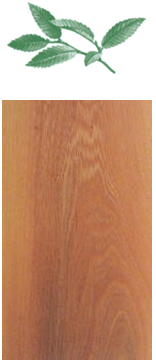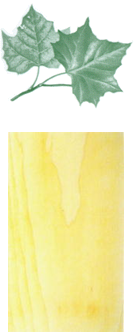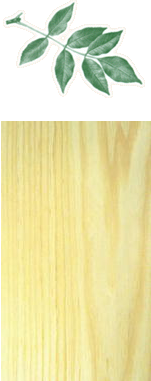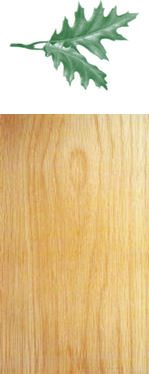
Elm
Uses:
Elm lumber is used principally in boxes, baskets, crates, and slack barrels; furniture, agricultural supplies and implements; caskets and burial boxes; and vehicles. The hard elms are preferred for some uses where more strength is required.
Description:
The sapwood of the elm is nearly white and the heartwood light brown, often tinged with red.
More Details...

Sycamore
Uses:
Sycamore is used principally for lumber, veneer and railroad crossties. Sycamore lumber is used for furniture, boxes (particularly small food containers), pallets, flooring, handles, and butcher’s blocks. Veneer is used for fruit and vegetable baskets, decorative panels and door skins.
Description:
The heartwood of sycamore is reddish-brown and the sapwood is lighter in color and normally 1 1/2 to 3 inches thick.
More Details...

White Ash
Uses:
Ash is used for furniture, cooperage, handles, oars, vehicle parts, baseball bats, and other athletic goods.
Description:
Commercial white ash is a group of species that consist mostly of white ash and green ash, although blue ash is also included. Heartwood of commercial white ash is brown; the sapwood is light colored or nearly white. Second-growth trees have a large portion of sapwood. Old-growth trees, which characteristically have little sapwood, are scarce.
More Details...
 Red Oak
Red Oak
Uses:
The wood of the red oak is largely cut into lumber, railroad crossties, and veneer. It is remanufactured into flooring, furniture, general millwork, boxes, pallets, and crates, agricultural implements, caskets, woodenware, handles, and railroad cars and boats.
Description:
The sapwood is nearly white and usually 1 to 2 inches thick. The heartwood is brown with a tinge of red. Sawed lumber of red oak cannot be separated by species on the basis of the characteristics of the wood alone. Red oak lumber can be separated from white oak by size and the arrangement of pores in latewood and because, as a rule, it lacks tyloses in the pores. The open pores of red oaks make them unsuitable for tight cooperage…
More Details...

